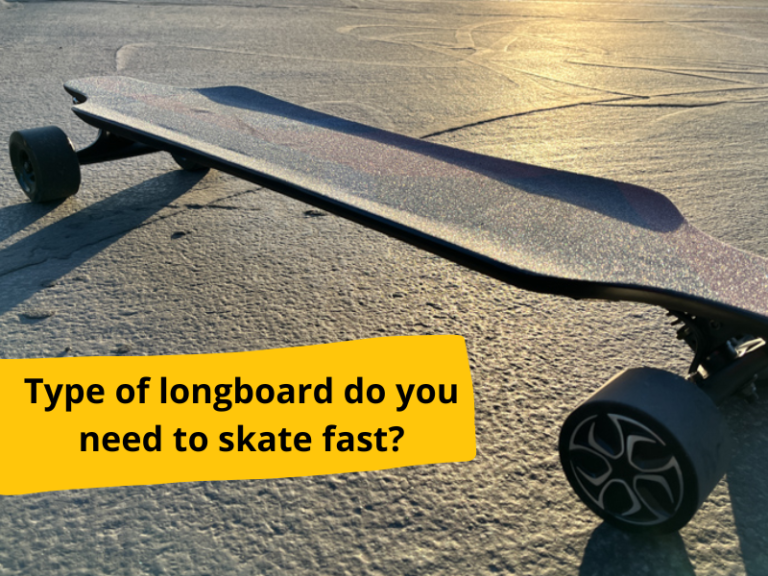Everything You need to Know about Bamboo Longboards
Longboarding has become an increasingly popular activity in recent years, with enthusiasts harnessing the freedom and excitement that come with cruising on a longboard.
With this growing popularity, manufacturers have been creating new and innovative ways to improve the longboarding experience. One such innovation is the use of bamboo as the primary material for longboards.
In this guide, we’ll explore everything you need to know about bamboo longboards, from their unique properties to why they’re a great option for anyone looking to start or continue their longboarding journey.
What is a bamboo longboard?
A bamboo longboard is a type of skateboard that is made from sustainably harvested bamboo and other materials like fiberglass.
Unlike traditional maple longboards, bamboo longboards offer more flexibility and a unique feel while riding due to their crazy amount of “springback.” This makes bamboo longboards the ultimate cruiser with plush flexibility, a subtle kick tail-camber profile, and dropped-through truck mounts, perfect for hard carves, freestyle, and dancing.
Because bamboo skateboards are lighter and stronger than maple, they provide more “pop” when performing tricks and refining skills. Bamboo longboards are great for cruising, commuting, carving, and even shredding downhill.
They bring the coolest in sustainable bamboo construction boards, precision components, and high-performance materials. That’s why people opt to switch to bamboo longboards.
Advantages of bamboo longboards
One of the main advantages of bamboo longboards is their durability and flexibility, which makes them ideal for cruising, commuting, carving, and even shredding downhill.
In comparison to maple boards, bamboo longboards are lighter and more agile, providing riders with a smoother and more effortless time on the board. Additionally, bamboo longboards are eco-friendly and sustainable, making them a more efficient option for riders who care about the environment.
Although they require proper care and maintenance to last for an extended period, bamboo longboards have proven to be a quality investment for riders due to their sturdy and reliable construction.
With their advantageous features, it’s no surprise that bamboo longboards are continuing to gain popularity within the longboarding community.

Disadvantages of bamboo longboards
One of the main disadvantages is that they tend to be more expensive than other types of longboards. Additionally, while bamboo is known for being durable, it may not hold up as well over time when exposed to heavy wear and tear.
Bamboo longboards may also be more susceptible to water damage than other types of longboards, which means they should be properly maintained to ensure their longevity.
Bamboo longboard maintenance
Maintaining a bamboo longboard is crucial to ensure its longevity and performance. In terms of cleaning, it is best to wipe down the board with a damp cloth and avoid using harsh chemicals or abrasive materials.
Regularly checking and tightening the trucks and bearings is also recommended.
As with any longboard, it is important to avoid exposing the board to extreme temperatures or moisture, as this can lead to warping and damage.
Are bamboo longboards more expensive than other types of longboards?
When it comes to the cost of bamboo longboards compared to other types, it really depends on the brand, quality, and features. Generally speaking, bamboo longboards can be slightly more expensive than some other types, but they are also often more affordable than maple.
This is because bamboo is a more sustainable and natural material to grow, making eco-conscious longboards slightly cheaper. However, longboards can be pricey due to factors such as trucks, hardware, and wheels. It’s important to consider all factors when deciding on a longboard, but ultimately, bamboo longboards are gaining popularity in the longboard community for their durability, comfort, and sustainability. Plus, they offer great performance results at a lower cost.
Why are bamboo longboards popular?
Bamboo longboards have gained popularity among skaters, especially the eco-conscious ones, because of their sustainability and durability. Bamboo longboards provide more shock-absorption than maple longboards, making them less likely to crack or break during use. Additionally, they are more lightweight, making them easier to transport and maneuver.
Due to their flexibility, bamboo longboards are comfortable for cruising and carving, but also offer enough stiffness for downhill shredding.
They are also aesthetically appealing, with their natural wood grain and unique patterns.
Can bamboo longboards be used for all types of riding?
The answer is yes! Bamboo longboards are versatile and can be used for cruising, carving, dancing, and downhill riding. They are perfect for riders who want a stable and comfortable ride with a responsive and flexible deck.
The bamboo material provides excellent shock absorption and helps create a smooth experience on city streets or rugged terrain. It is essential to choose a longboard that suits one’s riding style to enjoy the full benefits of a bamboo longboard.
How does the bamboo material affect the performance of a longboard?
The choice of material for a longboard deck has a significant impact on its performance, and bamboo is no exception. Bamboo is a flexible and resilient material that provides a smooth and comfortable ride. Its natural vibration dampening effect reduces road noise while giving you more control.
The flexibility of a bamboo longboard deck is higher than that of maple, giving riders a more responsive ride. Additionally, bamboo is a sustainable material, making it an eco-friendly choice.

I am a longboarding enthusiast and a blogger. On this blog, I share tips, tricks, and advice based on my experience. I am dedicated to helping newbies improve their skills and enjoy this fun activity to the fullest.
Disclosure:This post may contain affiliate links. If you click on a link and make a purchase, we may earn a commission at no additional cost to you. Learn more.







